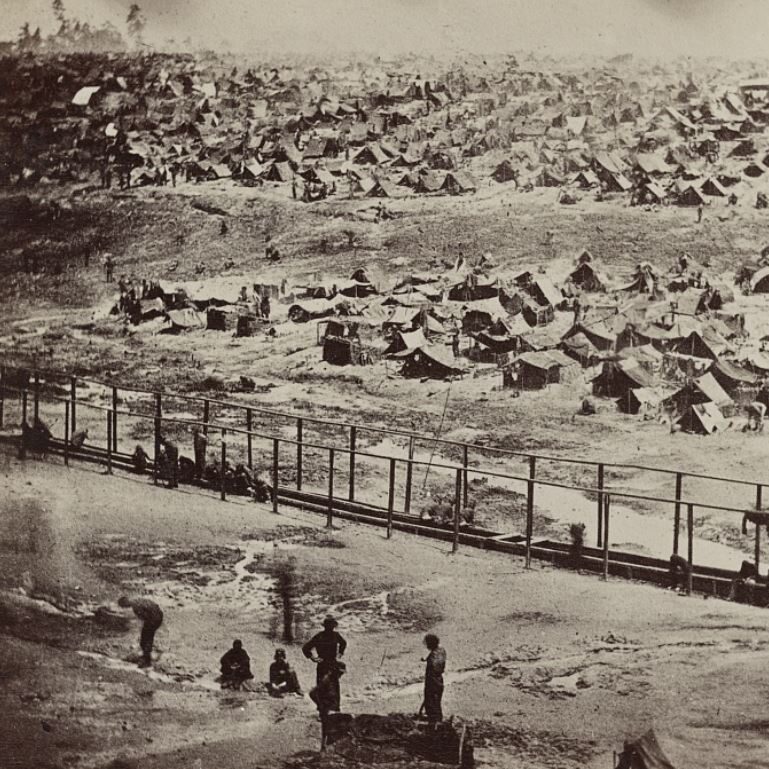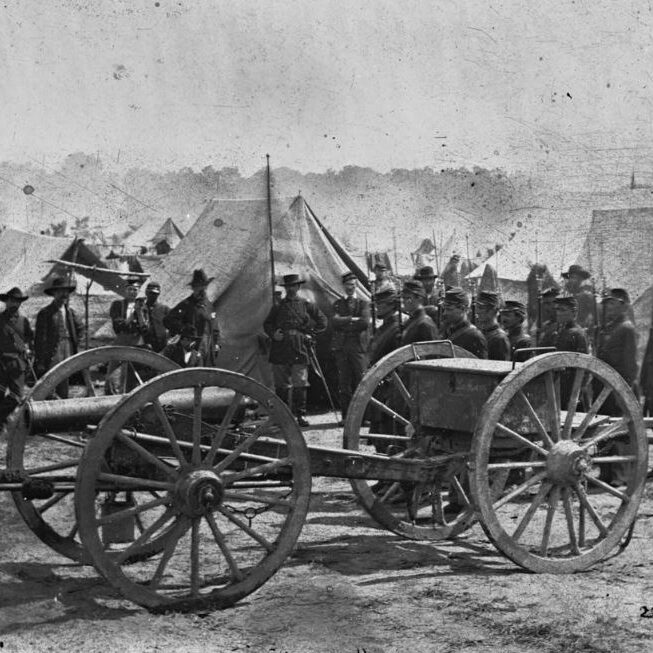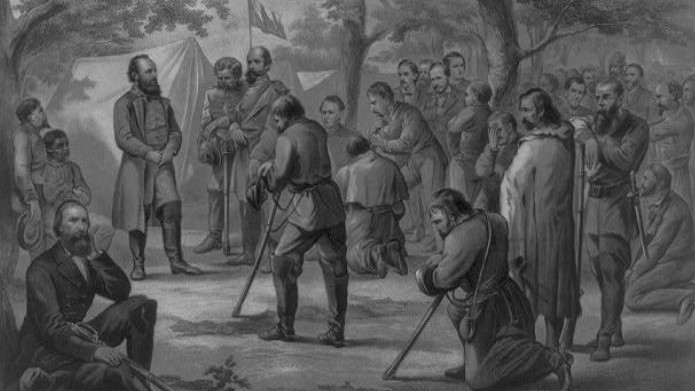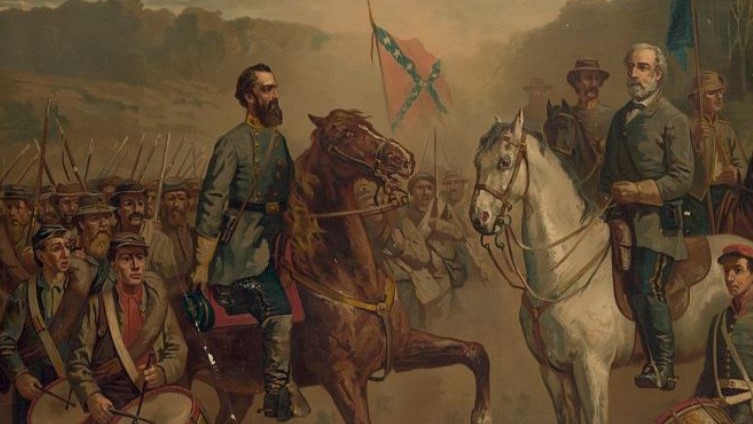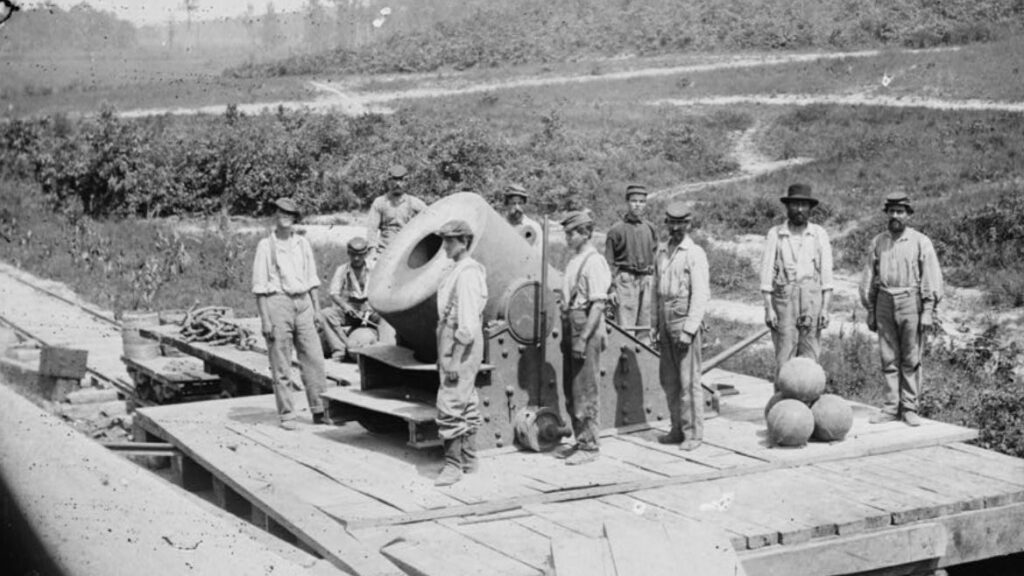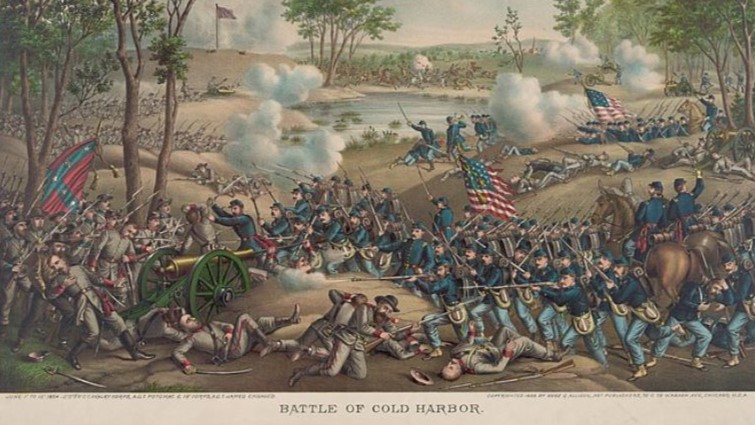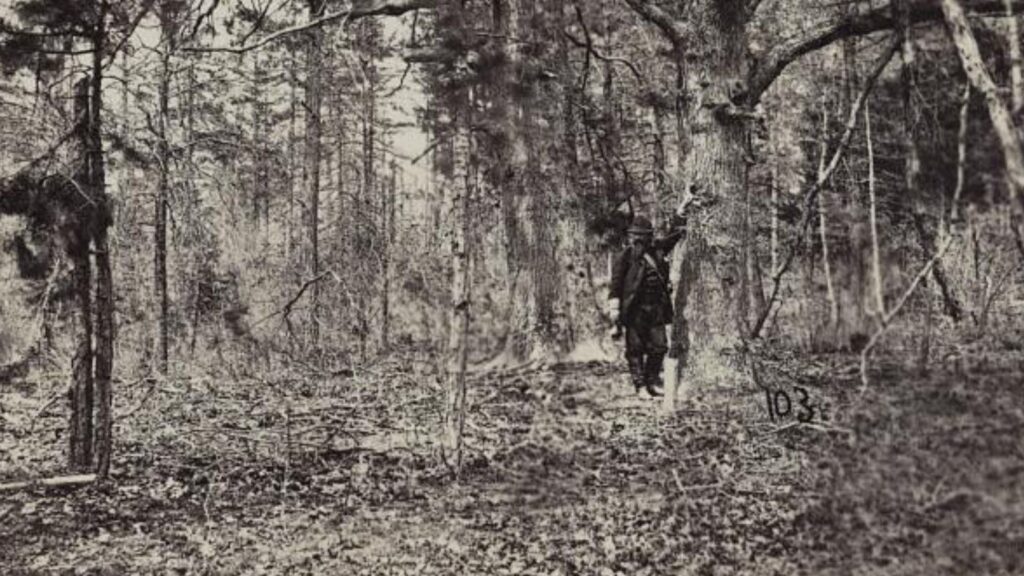Andersonville stands out as the most brutal prisoner of war camp in the Civil War.
The American Civil War pitted the Union states of the North against the Confederate States of the South. As the conflict escalated, both sides took prisoners of war (POWs), leading to the establishment of POW camps.
Overcrowded and lacking resources, Andersonville subjected its inmates to unimaginable suffering. With over 26,000 Union prisoners crammed into a space meant for 10,000, the camp became a breeding ground for disease and death.
In this article, we will delve into the harrowing conditions of Andersonville, shedding light on this darkest chapter of Civil War history.
- 1. The Confederacy and Prisoner Management
- 2. Overcrowding at Andersonville
- 3. Lack of Resources at Andersonville
- 4. Disease Runs Rampant at Andersonville
- 5. Death and Suffering: The Human Cost of Andersonville
- 6. The Trial of Captain Henry Wirz: Accountability for Atrocities
- 7. The Legacy of Andersonville
- Further Reading
1. The Confederacy and Prisoner Management
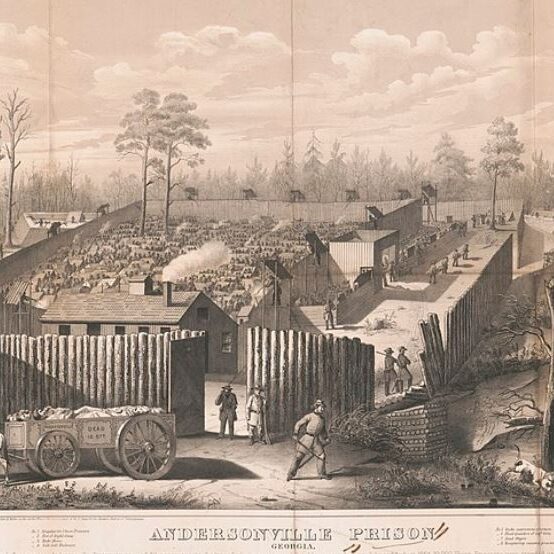
The Confederacy faced significant resource challenges during the Civil War. As a result it struggled to effectively manage prisoner-of-war camps. They were ill-prepared for the influx of captured Union soldiers.
Challenges Faced by the Confederacy
- Limited Resources: The Confederate government lacked the necessary resources to adequately provide for the growing number of prisoners. This resulted in shortages of food, clothing, and medical supplies within the camps.
- Inadequate Infrastructure: Many Confederate prison camps, including Andersonville, were hastily constructed and lacked proper facilities. This made it difficult to maintain sanitation and hygiene, leading to rampant disease outbreaks.
- Breakdown of Prisoner Exchange Program: The prisoner exchange program, which had initially facilitated the swift return of captives to their respective sides, broke down midway through the war. This led to a build-up of prisoners in Confederate camps, exacerbating issues of overcrowding and resource scarcity.
2. Overcrowding at Andersonville
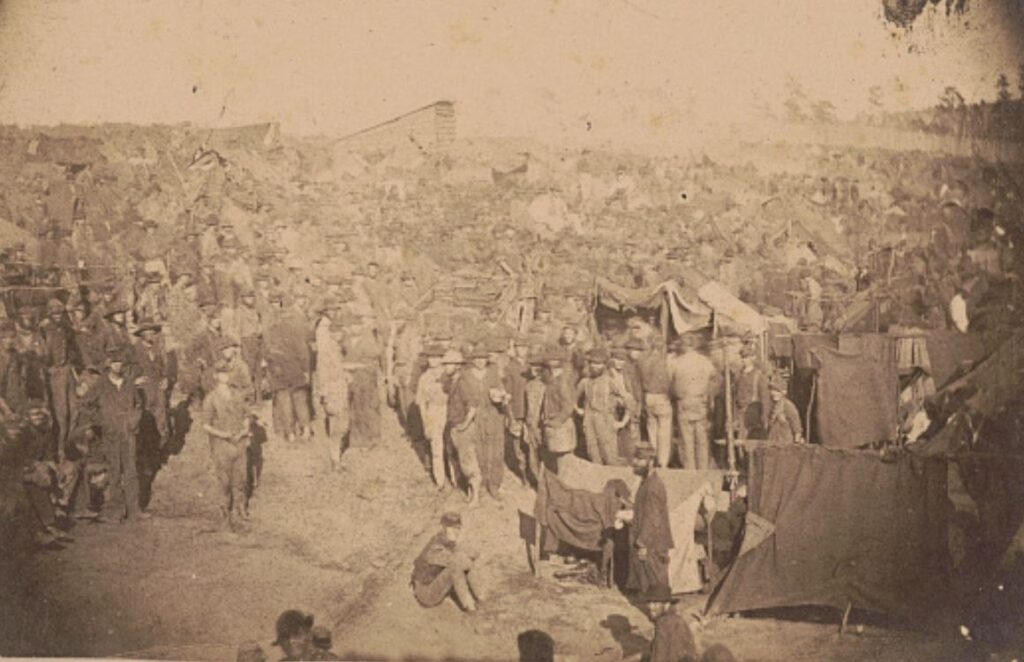
Andersonville was originally intended to house 10,000 prisoners. But it quickly became overwhelmed by the sheer number of captives held within its walls during the Civil War.
By June 1864, the camp held over 26,000 Union prisoners, more than double its intended capacity. This severe overcrowding had dire consequences for the inmates’ living conditions and well-being.
The overcrowding at Andersonville left prisoners with minimal space to move and live.
With only about 33.2 square feet per prisoner, equivalent to the size of a modern two-person dome tent, the camp was densely packed.
Crude shelters were made from scraps of wood and cloth, as well as mudbrick huts. These shelters provided inadequate protection from the elements for the overcrowded population. The exposure to harsh weather conditions increased the risk of illnesses such as pneumonia and trench foot, further adding to the suffering of the inmates.
Ineffective planning of the camp’s design meant that heavy rains would flood the camp, causing the overflow of sinks and mixing human waste with stagnant water.
The overcrowded conditions made it challenging to distribute rations equitably, leading to food shortages and malnutrition among the inmates.
3. Lack of Resources at Andersonville
The scarcity of essential resources such as food, clean water, and shelter at Andersonville exacerbated the already dire conditions faced by Union prisoners during the Civil War.
Shortages of Food
Food shortages were a constant reality for inmates at Andersonville.
Rations were meager and often consisted of rotten or poorly made provisions. Union prisoners lined up daily to receive rations, which typically included a small amount of cornmeal and either uncooked beef or raw bacon.
Occasionally, they received additional items like peas, molasses, or cornbread.
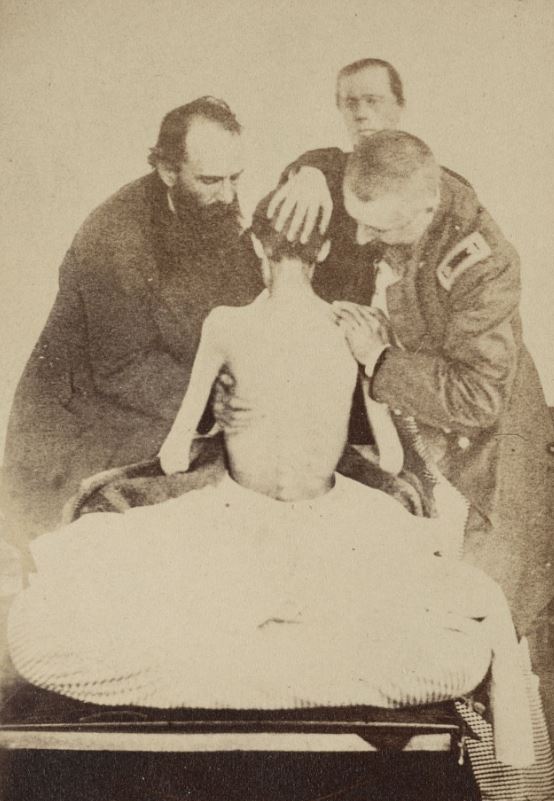
However, the inadequate quantity and quality of food left many prisoners malnourished and vulnerable to illness.
Limited Access to Clean Water
Access to clean water was severely restricted within the camp.
Prisoners had to rely on small pits dug to collect rainwater or moisture from the ground during periods when the Branch, a nearby water source, dried up or became contaminated.
The lack of clean water for drinking, cooking, and bathing contributed to the spread of waterborne diseases such as dysentery and cholera, further worsening the health of the prisoners.
4. Disease Runs Rampant at Andersonville
Disease was rampant within the confines of Andersonville, with illnesses like dysentery and scurvy spreading rapidly among the already weakened Union prisoners.
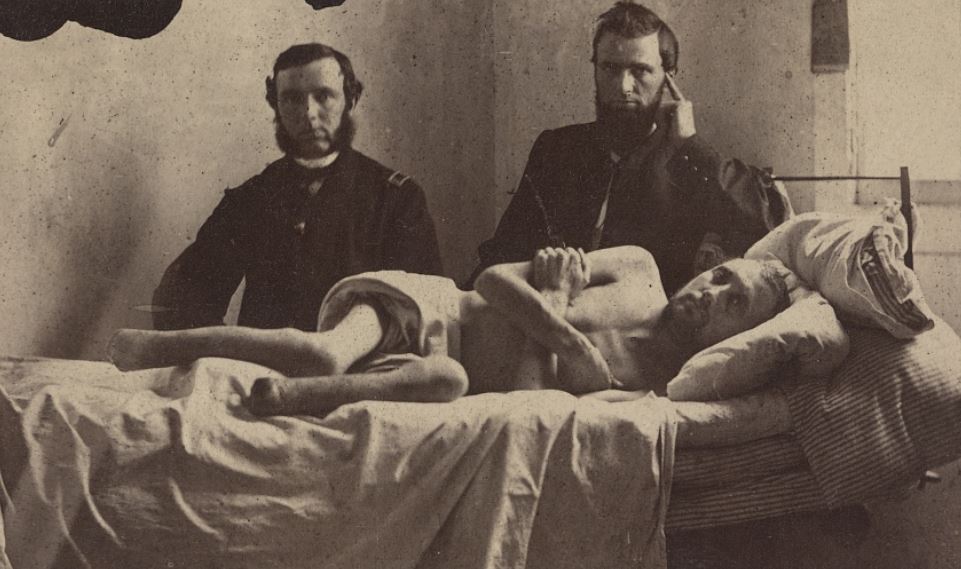
Spread of Diseases
Dysentery, characterized by severe diarrhea with blood or mucus, was one of the most prevalent diseases in the camp.
Contaminated water sources and poor sanitation facilitated the transmission of dysentery, leading to widespread outbreaks that affected large numbers of inmates.
Scurvy, caused by a deficiency of vitamin C, was another common ailment due to the inadequate diet provided to the prisoners.
Without access to fresh fruits and vegetables, many inmates developed scurvy, experiencing symptoms such as weakness, swollen gums, and bleeding.
Weakening of Prisoners
These diseases further weakened an already debilitated prisoner population.
Dysentery caused severe dehydration and malnutrition, exacerbating the effects of existing starvation and resulting in extreme weakness and fatigue.
Scurvy led to the deterioration of connective tissues, making prisoners more susceptible to infections and impairing their ability to heal from wounds or injuries.
As the illnesses progressed, many inmates became bedridden and unable to care for themselves, further diminishing their chances of survival.
Contribution to High Mortality Rate
The prevalence of diseases significantly contributed to the high mortality rate observed at Andersonville.
The unsanitary conditions, overcrowding, and lack of nutritious food exacerbated the severity of the diseases, creating a vicious cycle of sickness and death within the camp. These factors made Andersonville one of the deadliest Civil War prisoner-of-war camps.
5. Death and Suffering: The Human Cost of Andersonville
Andersonville’s grim legacy is underscored by the staggering statistic that over 12,000 Union prisoners lost their lives within its confines, making it the deadliest prisoner-of-war camp of the Civil War.
Emotional and Psychological Toll
The experience of confinement in Andersonville exacted a devastating emotional and psychological toll on its inmates.
Witnessing death on a daily basis, whether from disease, malnutrition, or brutality, took a profound toll on the mental well-being of the prisoners. The constant fear of illness, starvation, and violence, coupled with the loss of comrades and the uncertainty of survival, created an atmosphere of despair and hopelessness.
Many prisoners suffered from extreme anxiety, depression, and post-traumatic stress disorder as a result of their ordeal.
Even those who survived physically were forever changed by the experience, carrying the trauma of their captivity with them for the rest of their lives.
6. The Trial of Captain Henry Wirz: Accountability for Atrocities
Captain Henry Wirz was the commandant of Andersonville. After the Civil War he faced trial for war crimes. This marked a rare instance of accountability for Confederate officials implicated in the camp’s atrocities.
Background of Henry Wirz
Born in Switzerland in 1823, Henry Wirz immigrated to the United States in 1849 and eventually settled in Louisiana, where he worked as a physician.
When the Civil War erupted, Wirz enlisted in the Confederate Army and served as a surgeon before being appointed commandant of Camp Sumter, better known as Andersonville, in 1864.
Charges and Arrest
Under his watch, Andersonville became synonymous with suffering and death, as overcrowding, lack of resources, and disease ravaged the inmate population.
In the aftermath of the war, the Union government sought to hold Confederate officials accountable for the mistreatment of prisoners of war, including Captain Wirz. He was arrested in May 1865 and charged with conspiring to injure Union soldiers interned at Andersonville, as well as with acts of cruelty and murder.
The Trial and Execution of Captain Wirz
The trial, which began in August 1865, attracted significant attention both domestically and internationally, as it represented one of the first instances of a government holding individuals accountable for wartime atrocities.
The prosecution presented damning evidence against Wirz, including testimonies from former prisoners who recounted the horrific conditions they endured at Andersonville.
Wirz’s defense attempted to shift blame onto Confederate authorities higher up the chain of command, arguing that he was merely following orders and lacked the authority to improve conditions at the camp. Despite his defense’s efforts, Wirz was found guilty on multiple counts of conspiracy and murder, becoming the only Confederate officer to be convicted and executed for war crimes during the Civil War.
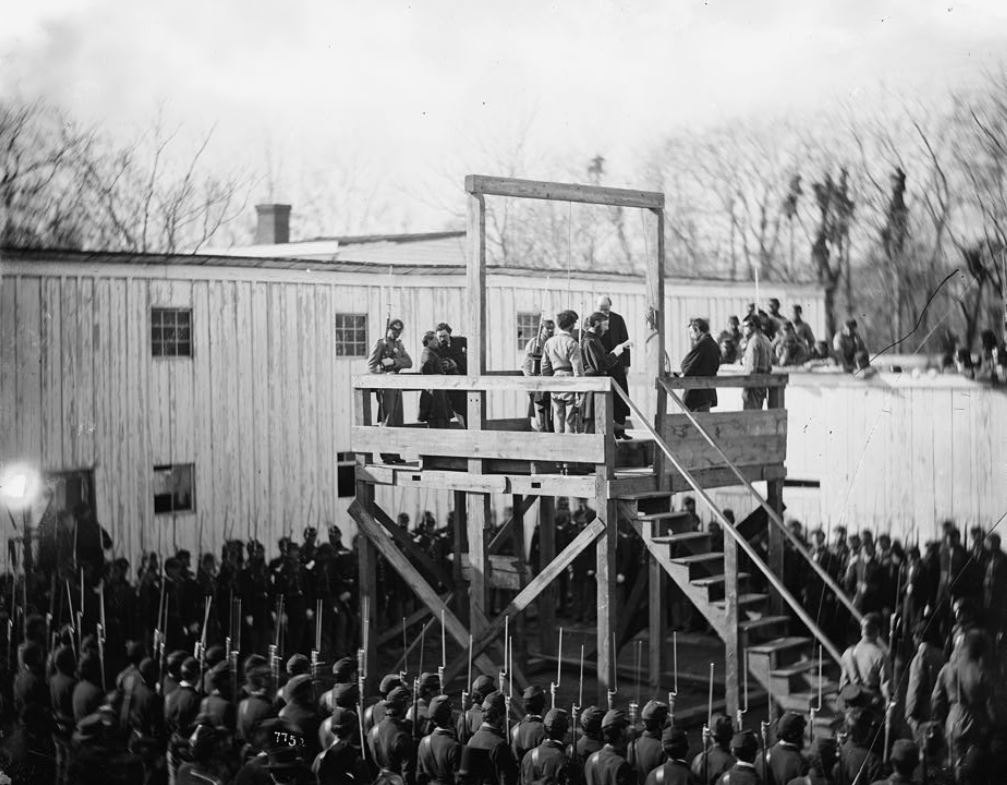
On November 10, 1865, Wirz was hanged in Washington, D.C., drawing crowds of spectators eager to witness justice being served.
His execution sent a powerful message about the consequences of mistreating prisoners of war and served as a symbolic gesture of accountability for the atrocities committed at Andersonville.
Controversies and Criticisms
Captain Wirz’s trial also sparked controversy and debate, with some questioning the fairness of his conviction and the legality of his execution.
Critics argued that Wirz was made a scapegoat for broader systemic failures within the Confederate prison system and that his trial was politically motivated to satisfy public outrage over the treatment of Union prisoners of war.
Despite these criticisms, Wirz’s trial remains a landmark moment. It served as a precedent for subsequent trials of war criminals and underscored the importance of holding individuals accountable for atrocities committed during armed conflict.
7. The Legacy of Andersonville
Andersonville’s legacy reverberates through American history.
Andersonville is now a National Historic Site. Andersonville stands as a solemn testament to the camp’s horrors. Its museum and cemetery provide visitors with insight into the prisoners’ experiences and offer a place of remembrance for the thousands who perished within its confines.
Andersonville’s legacy underscores the imperative of humane treatment for prisoners of war in contemporary conflicts. It serves as a poignant reminder of the importance of upholding international laws and conventions that safeguard the rights and dignity of all individuals, even amidst the chaos of war.
Further Reading
If you enjoyed this article, you may be interested to read more about the American Civil War events, or perhaps read about the South’s important victories. Read here for more general American history.

